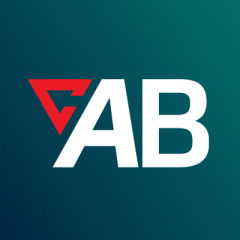What is our primary use case?
Mainly we have used ActiveBatch for automating the deployment of different environments like production staging and QA. Earlier, we used it to have different software for each environment. This used to consume a lot of time, however, after using ActiveBatch we can manage everything under a single piece of software. The monitoring and alerting features are a great help to get complete insights and hassle-free for work.
With the help of ActiveBatch, we have come up with cool automation starting from file transfer and pipelining the scripts with more test cases, had helped our company to grow many folds with the same resources.
How has it helped my organization?
Earlier, we had around four to five different tools to manage our automation which was all replaced by ActiveBatch. It is great. Even the resources required to manage those tools were reduced to a great extent and now, with only two employees, we are managing end-to-end automation.
Our team is mainly into the automation of the entire application which usually takes around 20 minutes to complete. When ActiveBatch was used, it was done in less than five minutes. We were able to complete it before the deadlines we had and even our clients are happy with the results we produced.
What is most valuable?
Almost all the features are great. That said, if we wanted to select the best, then the monitoring feature which gives complete insights in a single dashboard is the most helpful. It helps to detect immediately if something goes wrong instead of waiting for someone to report it.
The ROI of the application is more than what we used to spend for the entire year and its reasonable pricing has helped us to use it to its maximum.
We are able to integrate it into multiple third-party tools like email, backup, tracking systems, SharePoint, Slack alerts, etc.
What needs improvement?
The help center and documentation are not that helpful. If we had some more user-friendly explanations and more video tutorials about how to set up and debug items, that would be ideal.
The preset job step types make designing easy, while the steps of the job that allow scripts and code to be run allow for a wide range of additional functionality. This can be made better with more example scripts and pre-coded samples.
If a few AI tools can be integrated with the product, it would enhance the entire product setup time and debugging issues.
For how long have I used the solution?
I have used the solution in a previous company for more than a year. In my current company, I've been working with it for the past six months.
What do I think about the stability of the solution?
The product is very mature. There are a few bugs however, none of them are roadblocks. It can be resolved by some workaround.
What do I think about the scalability of the solution?
There are no scalability issues. It easily can be used in a company with more than 1,000 employees.
How are customer service and support?
They have very good customer service. We had an issue while setting up and we connected with their support team. They were able to help us and fix it on the same day. Their response time has been great.
How would you rate customer service and support?
Which solution did I use previously and why did I switch?
I previously used Selenium, however, it's all bits and pieces, so we had to switch to ActiveBatch automation.
How was the initial setup?
It was straightforward to set up. Only in the end, when we were importing files, did we feel a little more documentation would have been required.
What about the implementation team?
We had an in-house team for the implementation. I would rate them eight out of ten.
What was our ROI?
It has helped to achieve a 20% to 30% net revenue increase in the last quarter.
What's my experience with pricing, setup cost, and licensing?
Setup is easy and can be done within one or two days. The pricing is reasonable when compared to competitors. There is no need to worry about licensing as it's taken care of when you choose the plan.
Which other solutions did I evaluate?
Since I have worked with ActiveBatch in my previous organization, it was my go-to option. I did not evaluate others.
What other advice do I have?
Overall, it's the best product that fits perfectly to most of our use cases. That said, it can be made a little more budget-friendly.
Which deployment model are you using for this solution?
Public Cloud
Disclosure: I am a real user, and this review is based on my own experience and opinions.

















Hi there! Thank you for being such a longtime user and continued supporter of ActiveBatch. We appreciate the detailed review and wanted to take the opportunity to respond to some of your comments regarding areas of product improvement. I’m happy to share that we can achieve many of the use cases you’ve mentioned within Version 12 of ActiveBatch.
First, V12 makes major improvements to our reporting facilities, refreshing our Reporting Services to become the new Instance Reporting facility, and creating a brand new reporting facility for Template Reports. This allows you to extensively report on all objects system-wide on a variety of properties and data points. What’s more, this facility operates through a pre-created ETL job that will automatically deposit new data into a heavily-documented Template Reporting database on a designated interval. This allows you to use a built-in database reporting service such as SSRS, or allows you to connect to tools like Tableau or Power BI. We include examples in our documentation of popular reports.
V12 also brought an entirely new, high-performance Console that replaces the V11-and-earlier Admin application. This responsive, modern UI has a familiar feel while dramatically improving the user experience. You can do things like tab documents, open multiple views and editors at one time, and tab overarching connections to multiple Job Schedulers. We released a native mobile app for iOS and Android at the same time, meaning you can enable push notifications to approved devices, and monitor the status of your operations from anywhere in the world. You can also respond to alerts by re-triggering failed jobs, re-queueing jobs sitting in a machine bottleneck, and perform object operations like disabling and triggering.
Finally, we’d like to reiterate the powerful abilities of our Service Library and Rest API Adapter, which allows you to connect, without scripting, to any server, service, or application. If our prebuilt Job Steps for Amazon EC2 only solve one piece of your cloud strategy, then you can easily connect to other services like Snowflake in just a few minutes. You can easily turn the resulting methods and functions into your own custom drag-and-drop Job Steps for infinite extensibility.
We hope ActiveBatch continues to be an essential component of your organization’s IT strategy and critical IT operations. Please contact us and we can provide more information, documentation, and training materials on the features above.